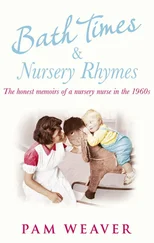Nelson Johnson - Boardwalk Empire - The Birth, High Times, and Corruption of Atlantic City
Здесь есть возможность читать онлайн «Nelson Johnson - Boardwalk Empire - The Birth, High Times, and Corruption of Atlantic City» весь текст электронной книги совершенно бесплатно (целиком полную версию без сокращений). В некоторых случаях можно слушать аудио, скачать через торрент в формате fb2 и присутствует краткое содержание. Жанр: Старинная литература, на английском языке. Описание произведения, (предисловие) а так же отзывы посетителей доступны на портале библиотеки ЛибКат.
- Название:Boardwalk Empire: The Birth, High Times, and Corruption of Atlantic City
- Автор:
- Жанр:
- Год:неизвестен
- ISBN:нет данных
- Рейтинг книги:5 / 5. Голосов: 1
-
Избранное:Добавить в избранное
- Отзывы:
-
Ваша оценка:
- 100
- 1
- 2
- 3
- 4
- 5
Boardwalk Empire: The Birth, High Times, and Corruption of Atlantic City: краткое содержание, описание и аннотация
Предлагаем к чтению аннотацию, описание, краткое содержание или предисловие (зависит от того, что написал сам автор книги «Boardwalk Empire: The Birth, High Times, and Corruption of Atlantic City»). Если вы не нашли необходимую информацию о книге — напишите в комментариях, мы постараемся отыскать её.
Boardwalk Empire: The Birth, High Times, and Corruption of Atlantic City — читать онлайн бесплатно полную книгу (весь текст) целиком
Ниже представлен текст книги, разбитый по страницам. Система сохранения места последней прочитанной страницы, позволяет с удобством читать онлайн бесплатно книгу «Boardwalk Empire: The Birth, High Times, and Corruption of Atlantic City», без необходимости каждый раз заново искать на чём Вы остановились. Поставьте закладку, и сможете в любой момент перейти на страницу, на которой закончили чтение.
Интервал:
Закладка:
The resort had no choice but to pursue Black workers. What none of the White hoteliers could foresee as they began recruiting Blacks was the extent to which their operations would come to rely upon them. Nor could the operators envision what a large presence they would have in the city. And, finally, the last thing business owners gave any thought to was how it would all play out in terms of social integration.
During the early years, Blacks were integrated throughout the city. However, as their numbers increased they were forced out of White neighborhoods and into a ghetto known as the “Northside,” an area that was literally the other side of the railroad tracks that ran through that section of town. The Northside was bounded by Absecon Boulevard to the north, Connecticut Avenue to the east, Atlantic Avenue to the south, and Arkansas Avenue to the west. Between 1880 and 1915, the pattern of residence made a radical shift. In 1880, more than 70 percent of the Black households had White neighbors, by 1915 only 20 percent. In a single generation the population had diverged, with Blacks to the Northside and Whites to the Southside and other areas. By 1915, Blacks only went to the Southside to work, to walk on the Boardwalk, and to bathe on their restricted section of the beach.
The Northside became a city within a city. As Blacks encountered racial prejudice, they reached inward to construct a social and institutional life of their own. While White racism had created the physical ghetto, it was civic-minded upper- and middle-class Blacks who led their community to create an institutional ghetto in order to provide services that the White community had denied Blacks. The first major institution established by Blacks in Atlantic City was the church.
According to historian and prominent turn-of-the-20th-century African-American leader, W. E. B. Du Bois, “The Negro Church is the only social institution of the Negroes which started in the African forest and survived slavery.” In support of his conclusion, Du Bois argued that the transplanted African priest, “early became an important figure on the plantation and found his function as the interpreter of the supernatural, the comforter of the sorrowing, and as the one who expressed, rudely, but picturesquely, the longing and disappointment and resentment of the stolen people.” Black historians, such as Du Bois, have noted that the first established Black churches had only “a veneer of Christianity.” Over the years, Blacks found in evangelical sects, such as Baptist and Methodist, a set of beliefs and an opportunity for emotional expression relevant to their everyday experiences in slavery. From the beginning of the importation of slaves, Blacks received Christian Baptism. Initially, there was strong resistance to baptizing slaves. The opposition subsided when laws made it clear that slaves did not become free through the acceptance of the Christian faith. As long as they continued to be property of Whites, Blacks were free to develop their own religions, taking from White churches those practices and tenets that they found relevant to their condition.
African-American historians have characterized their church in slavery as the “invisible institution.” The chaos brought about by the Civil War caused a major disruption in that institution. Despite emancipation, the African-American’s world had been turned upside down. The social disorganization throughout the South was enormous. The dismantling of Reconstruction caused further deterioration for Blacks. Out of this turmoil the “invisible institution” became visible. It began this process by affiliating with existing independent Negro churches in the North; initially, the most prevalent were the Baptist and Methodist Negro organizations. These denominations, and others, grew rapidly and the church became the glue of Black society. The church was the only effective agency for helping Blacks to cope with racial prejudice. Its growth was a product of necessity. Throughout its development, between the Civil War and World War I, the church was shaped by not only the Biblical teachings of White denominations but, more importantly, by the cultural forces and collective experiences of their isolated social world, both as slaves and freed people.
Through no choice of their own, Blacks who decided to make Atlantic City their home became socially isolated. Out of necessity, these new residents clung to their churches, which became the center of social life in the Black community. It was here that Blacks could freely express themselves through worship and attain status and recognition by participation in the hierarchy and social organizations of their churches. It was common during the off-season for Blacks to combine both religion and recreation on Sundays. Families and friends frequently met at church and brought picnic lunches or uncooked meals with them. After the religious services, they walked to the beach, gathering firewood along the way. There, they camped out for the remainder of the day, eating meals prepared over an open fire and spending the afternoon talking, singing, and playing games.
African-American scholars who have studied the development of their churches in Northern cities have argued that there was a relationship between Black social classes and church affiliation. The upper class usually formed the majority of the relatively small Episcopal, Presbyterian, and Congregational churches; the middle class primarily comprised the more numerous Baptist and Methodist churches; and the lower class gravitated toward the small and numerous Holiness and Spiritualist churches.
The first traditional Black church in Atlantic City was the Bethel African Methodist Episcopal (AME) Church founded in 1875. In 1884, it was renamed St. James AME Church. The next traditional Black church came a year later in 1876. That year, Price Memorial African Methodist Episcopal Zion was founded by a group of locals headed by Clinton Edwards, Dr. George Fletcher, and Cora Flipping. Clinton Edwards was the first Black born in Atlantic City. Dr. Fletcher was the city’s first Black physician. Cora Flipping and her son, John, founded one of the first funeral homes in Atlantic City. These people were not only leaders of a new church, but also leaders in their community. Their stature attracted many members. St. James and Price Memorial are only two examples. To this day, both churches remain a vital force in Atlantic City’s Black community.
In the two generations between 1880 and 1930, many church organizations took root in the Black community. By 1930, Atlantic City had a total of 15 traditional Black church organizations. In addition, there were numerous storefront churches that served the needs of migrant Blacks newly out of the South.
The migration of Southern Blacks to the urban North was traumatic for many of them. Stripped of the practices and social structures they had created in order to cope with their lowly status in Southern society, many felt lost in a strange land. Without the customs of the invisible church, these new migrants found it difficult to adjust to the tumult of urban life. The loss of the customary religious practices, which had been their only refuge during slavery, produced an ever-present crisis in the life of the average Black migrant. In order for the visible Black church to play the role needed by its followers, it had to be transformed.
The transformation of the African-American church began with secularization. Black churches began to lose their other-worldliness and focused their energy on the conditions of their congregants in this world. Churches became increasingly interested in the affairs of the community as they impacted upon their members. Another transformation that occurred in Black religious behavior was the emergence of Holiness and Spiritualist churches. Originally formed as personality cults, their leaders had a message directed to the post-slavery experience. In Atlantic City most such churches had their inception in storefronts, side-by-side with row houses and businesses. These storefront churches were usually located in the poorer neighborhoods and served the lower class, especially the newly arrived migrants from the South. As was the case in other Northern cities, storefront churches flourished because they adopted the rural church experience to city life by providing the face-to-face association of a small church. Their existence was due partly to the poverty of their members and the fact that congregants could participate more freely in services during prayers by “shouting.”
Читать дальшеИнтервал:
Закладка:
Похожие книги на «Boardwalk Empire: The Birth, High Times, and Corruption of Atlantic City»
Представляем Вашему вниманию похожие книги на «Boardwalk Empire: The Birth, High Times, and Corruption of Atlantic City» списком для выбора. Мы отобрали схожую по названию и смыслу литературу в надежде предоставить читателям больше вариантов отыскать новые, интересные, ещё непрочитанные произведения.
Обсуждение, отзывы о книге «Boardwalk Empire: The Birth, High Times, and Corruption of Atlantic City» и просто собственные мнения читателей. Оставьте ваши комментарии, напишите, что Вы думаете о произведении, его смысле или главных героях. Укажите что конкретно понравилось, а что нет, и почему Вы так считаете.












